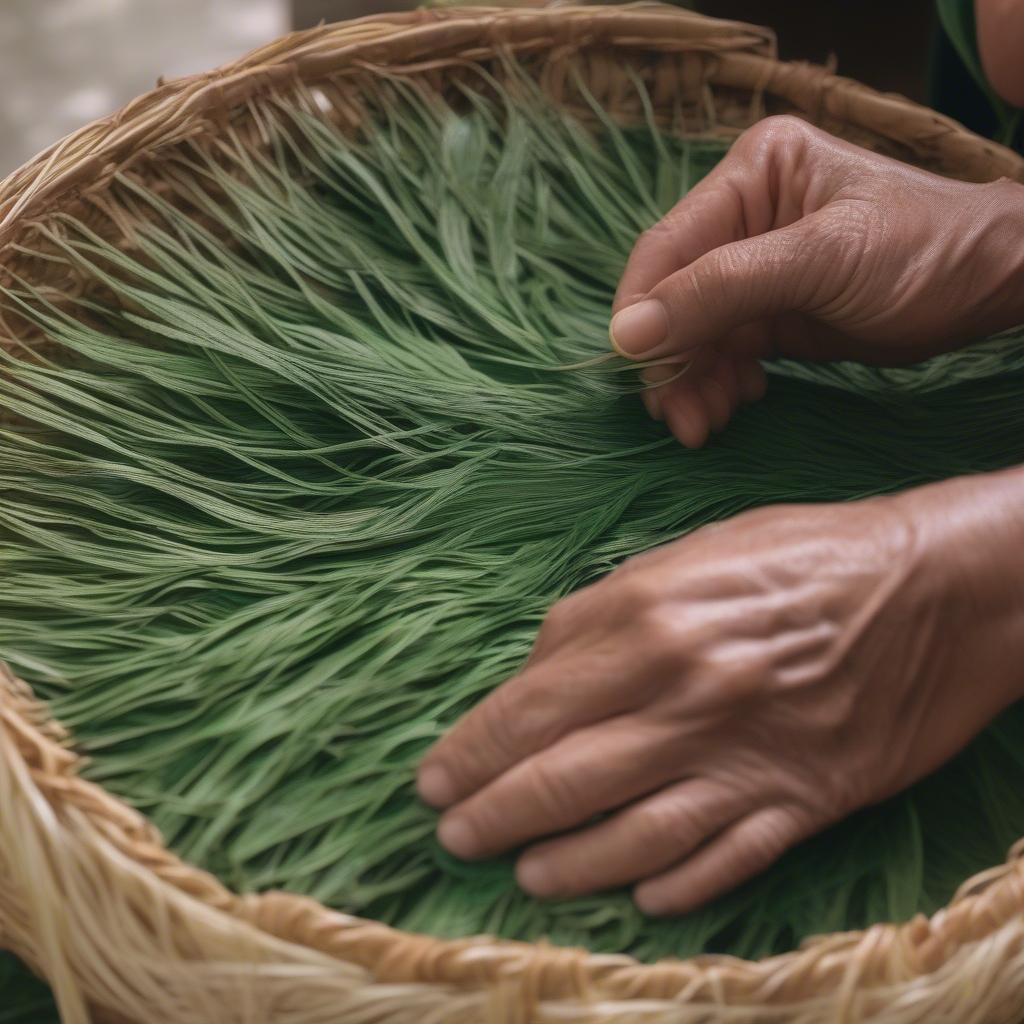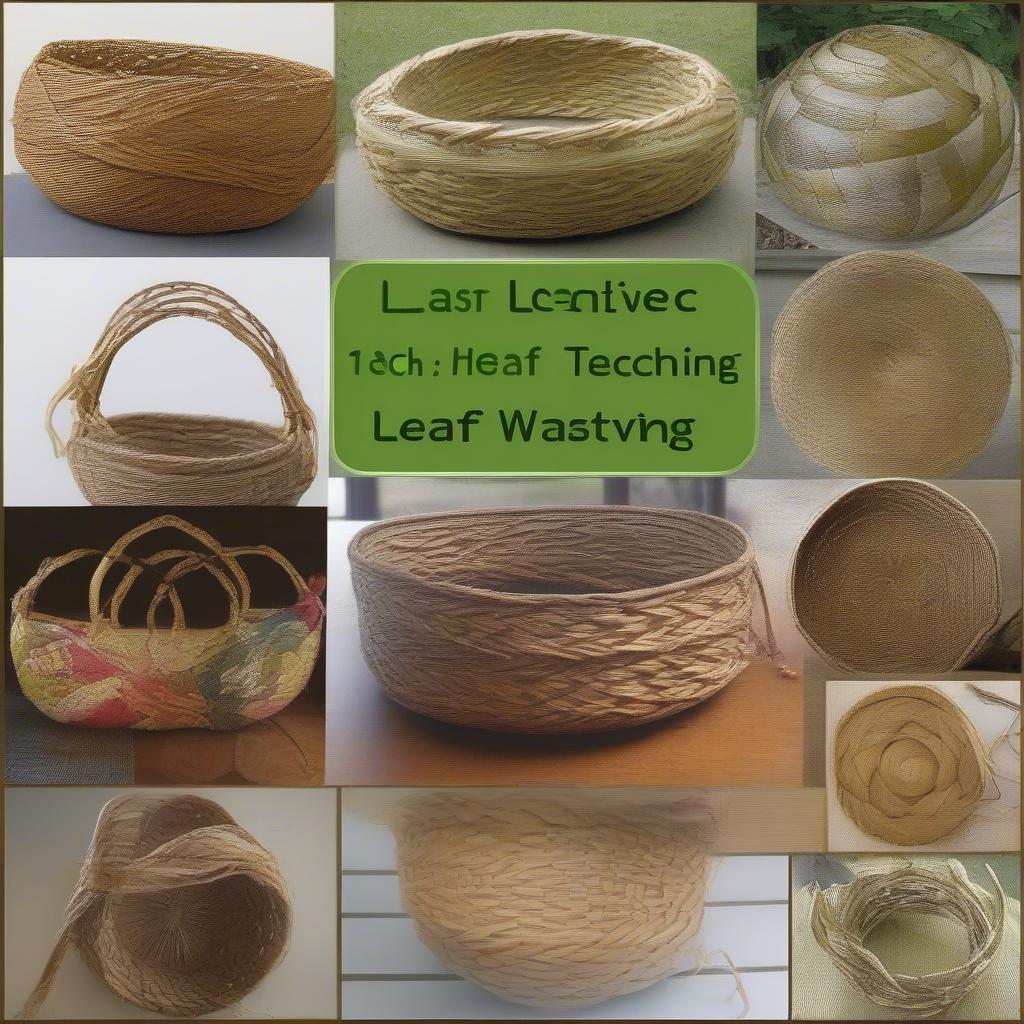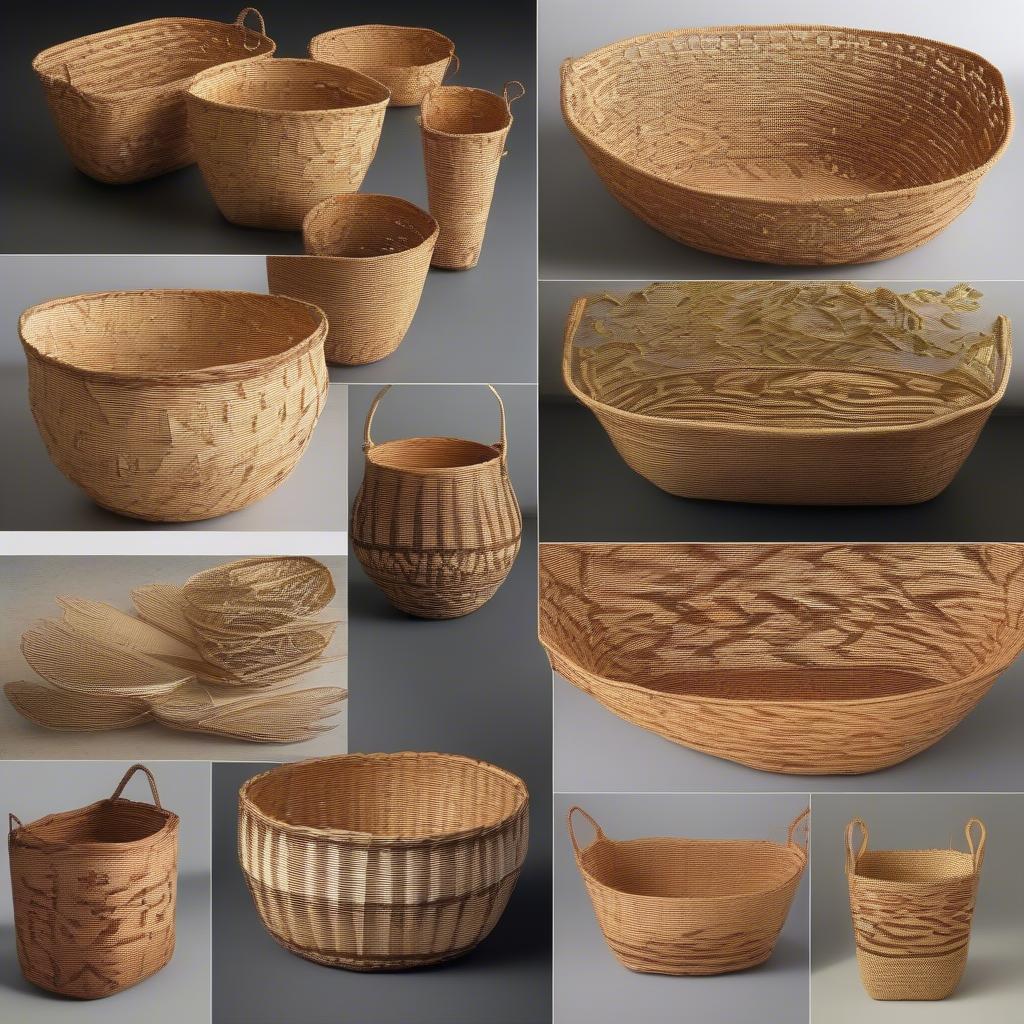Basket Weaving
Basket Weaving with Watsonia Leaves: A Comprehensive Guide
Basket Weaving With Watsonia Leaves offers a unique and sustainable approach to this ancient craft. This guide explores the techniques, materials, and artistry involved in creating beautiful and functional baskets using these readily available and versatile leaves.
Discovering the Art of Watsonia Leaf Basket Weaving
Watsonia leaves, known for their strength and flexibility, are an excellent natural material for basket weaving. This sustainable practice utilizes readily available resources, transforming ordinary leaves into extraordinary works of art. Whether you’re a seasoned basket weaver or a curious beginner, discovering the art of watsonia leaf basket weaving opens a world of creative possibilities. From simple coiled baskets to intricate woven designs, the possibilities are endless. This craft connects you with nature, allowing you to create functional and decorative pieces while minimizing environmental impact.
 Close-up of hands weaving a basket with watsonia leaves
Close-up of hands weaving a basket with watsonia leaves
Preparing Watsonia Leaves for Weaving
The first step in watsonia leaf basket weaving is preparing the leaves. Select fresh, healthy leaves, avoiding those with blemishes or tears. Carefully cut the leaves from the plant, ensuring a clean cut to prevent fraying. Next, flatten the leaves by placing them between heavy books or pressing them with a warm iron. This process makes them pliable and easier to work with. Once flattened, the leaves can be cut into strips of desired width depending on the basket’s design. Soaking the leaves in warm water for a short period before weaving can enhance their flexibility, making them even more manageable.
Basic Watsonia Leaf Basket Weaving Techniques
Several techniques can be employed for basket weaving with watsonia leaves. The most common methods include coiling, plaiting, and twining. Coiling involves wrapping and stitching bundles of watsonia leaves together to create a spiral shape. Plaiting is a more straightforward technique, similar to braiding hair, and creates a flat, woven surface. Twining, on the other hand, utilizes two sets of watsonia leaf strips, twisting them around each other to form the basket’s structure. Each technique offers a distinct aesthetic, allowing for a diverse range of basket designs. Experimenting with different techniques will help you discover your preferred style and create unique pieces.
 Different basket weaving techniques using watsonia leaves
Different basket weaving techniques using watsonia leaves
Creating Intricate Designs with Watsonia Leaves
Once you’ve mastered the basic techniques, you can explore more intricate designs. Adding different colored watsonia leaves or incorporating other natural materials like grasses or vines can create stunning visual effects. Experimenting with different weaving patterns, such as adding a herringbone or diamond pattern, can further enhance your basket’s aesthetic appeal. Don’t be afraid to let your creativity flow and explore different design possibilities.
“The beauty of watsonia leaf basket weaving lies in its versatility,” says renowned basket weaver, Anya Petrova. “The leaves are incredibly forgiving, allowing for both simple and complex designs.”
Caring for Your Watsonia Leaf Baskets
Proper care ensures the longevity of your handcrafted watsonia leaf baskets. Avoid exposing them to direct sunlight or excessive moisture, as this can cause the leaves to fade or become brittle. Dust your baskets regularly with a soft cloth or brush. If your basket gets wet, allow it to air dry completely to prevent mold or mildew. With proper care, your watsonia leaf baskets will remain beautiful and functional for years to come.
 Display of finished watsonia leaf baskets in various sizes and designs
Display of finished watsonia leaf baskets in various sizes and designs
Conclusion
Basket weaving with watsonia leaves is a rewarding and sustainable craft. From simple to complex designs, the possibilities are endless. By mastering the basic techniques and exploring different creative approaches, you can create beautiful and functional baskets that showcase the natural beauty of watsonia leaves. So gather your materials, unleash your creativity, and embark on the journey of watsonia leaf basket weaving.
FAQ
- Where can I find watsonia leaves?
- What tools do I need for watsonia leaf basket weaving?
- How long does it take to weave a watsonia leaf basket?
- Can I dye watsonia leaves different colors?
- How do I repair a damaged watsonia leaf basket?
- What are some other uses for watsonia leaves besides basket weaving?
- Are there any online resources for learning watsonia leaf basket weaving?
When you need assistance, please contact us at Hanoi, Vietnam or Tech Avenue, Suite 12, San Francisco, CA 94105, USA. We have a 24/7 customer service team.
